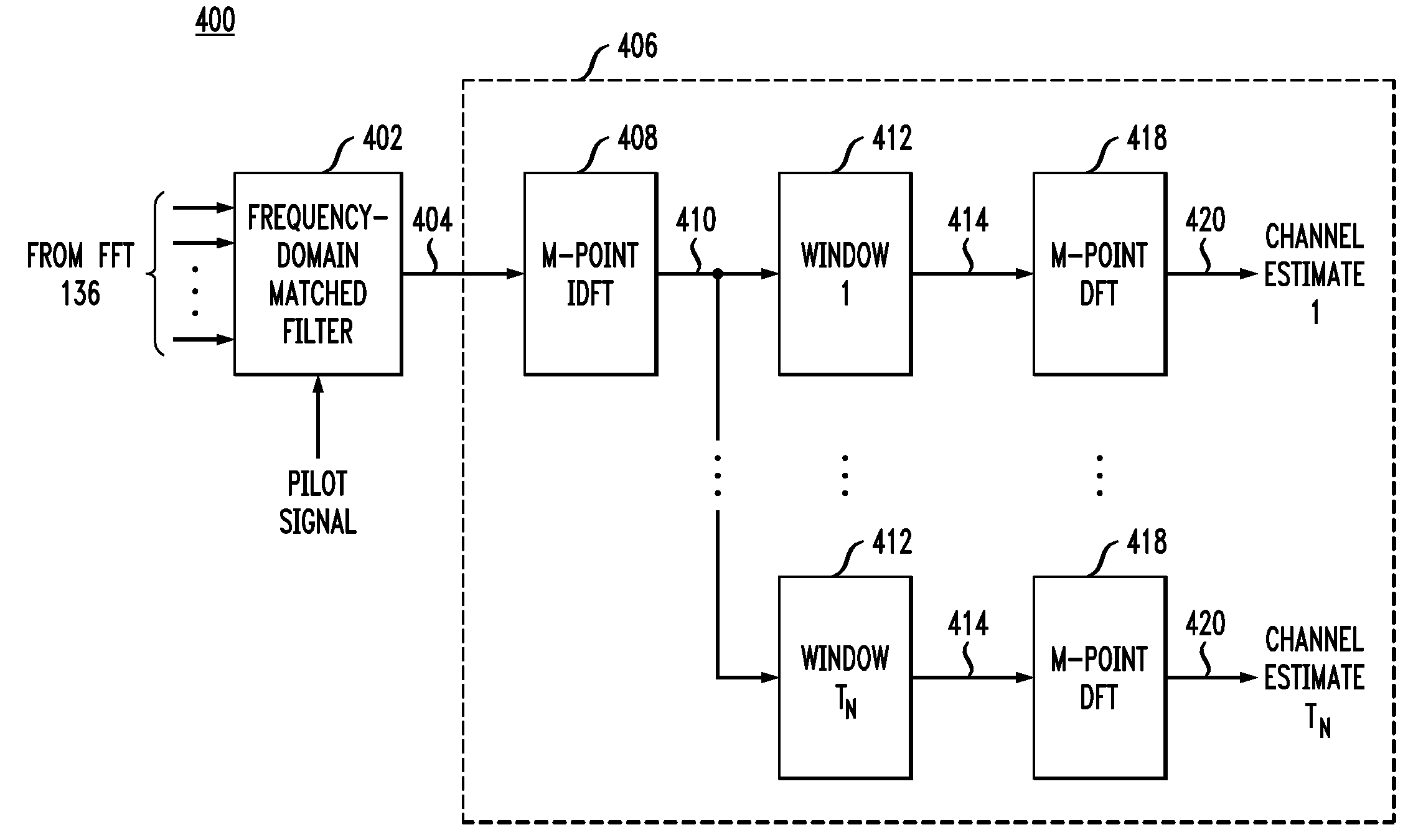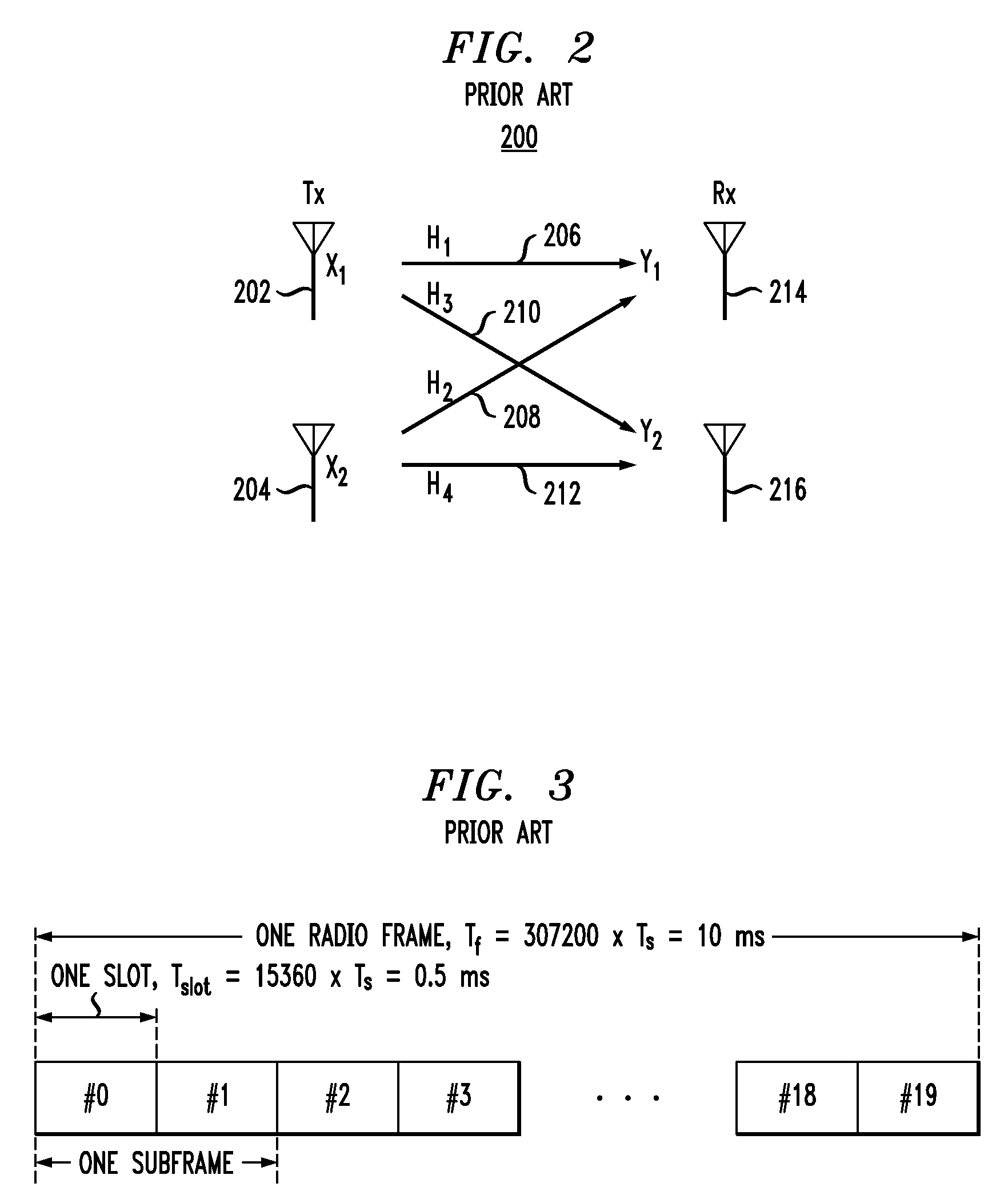Uplink channel estimation
hannel estimation technology, applied in the field of channel estimation in a wireless communication system, can solve the problems of computational cost, large processing resources, and computational cost of conventional channel estimation techniques, and achieve the effect of simple and efficien
- Summary
- Abstract
- Description
- Claims
- Application Information
AI Technical Summary
Benefits of technology
Problems solved by technology
Method used
Image
Examples
Embodiment Construction
[0034]FIG. 3 shows the structure of an exemplary radio frame (known as a “type 1” radio frame) in an LTE system. This frame structure is applicable to both frequency-division duplex (FDD) and time-division duplex (TDD) LTE systems. Each radio frame is Tf=307200×Ts=10 ms long and consists of 20 slots of length Tslot=15360×Ts=0.5 ms, numbered from 0 to 19. A sub-frame is defined as two consecutive slots. Depending on the cyclic prefix length, each slot consists of 6 or 7 OFDM symbols for an extended or normal cyclic prefix, respectively. Assuming that the system uses a normal cyclic prefix, such that each slot has 7 OFDM symbols, the pilot signals transmitted for channel estimation occupy the fourth OFDM symbol.
[0035]A received signal y is the sum of (i) the convolution of an input pilot signal x with the channel impulse response h and (ii) Gaussian noise n as shown in Equation (1) below:
y=x*h+n (1)
Equation (1) can be written in the frequency domain as shown in Equation (2) below:
{r...
PUM
 Login to View More
Login to View More Abstract
Description
Claims
Application Information
 Login to View More
Login to View More - R&D
- Intellectual Property
- Life Sciences
- Materials
- Tech Scout
- Unparalleled Data Quality
- Higher Quality Content
- 60% Fewer Hallucinations
Browse by: Latest US Patents, China's latest patents, Technical Efficacy Thesaurus, Application Domain, Technology Topic, Popular Technical Reports.
© 2025 PatSnap. All rights reserved.Legal|Privacy policy|Modern Slavery Act Transparency Statement|Sitemap|About US| Contact US: help@patsnap.com



